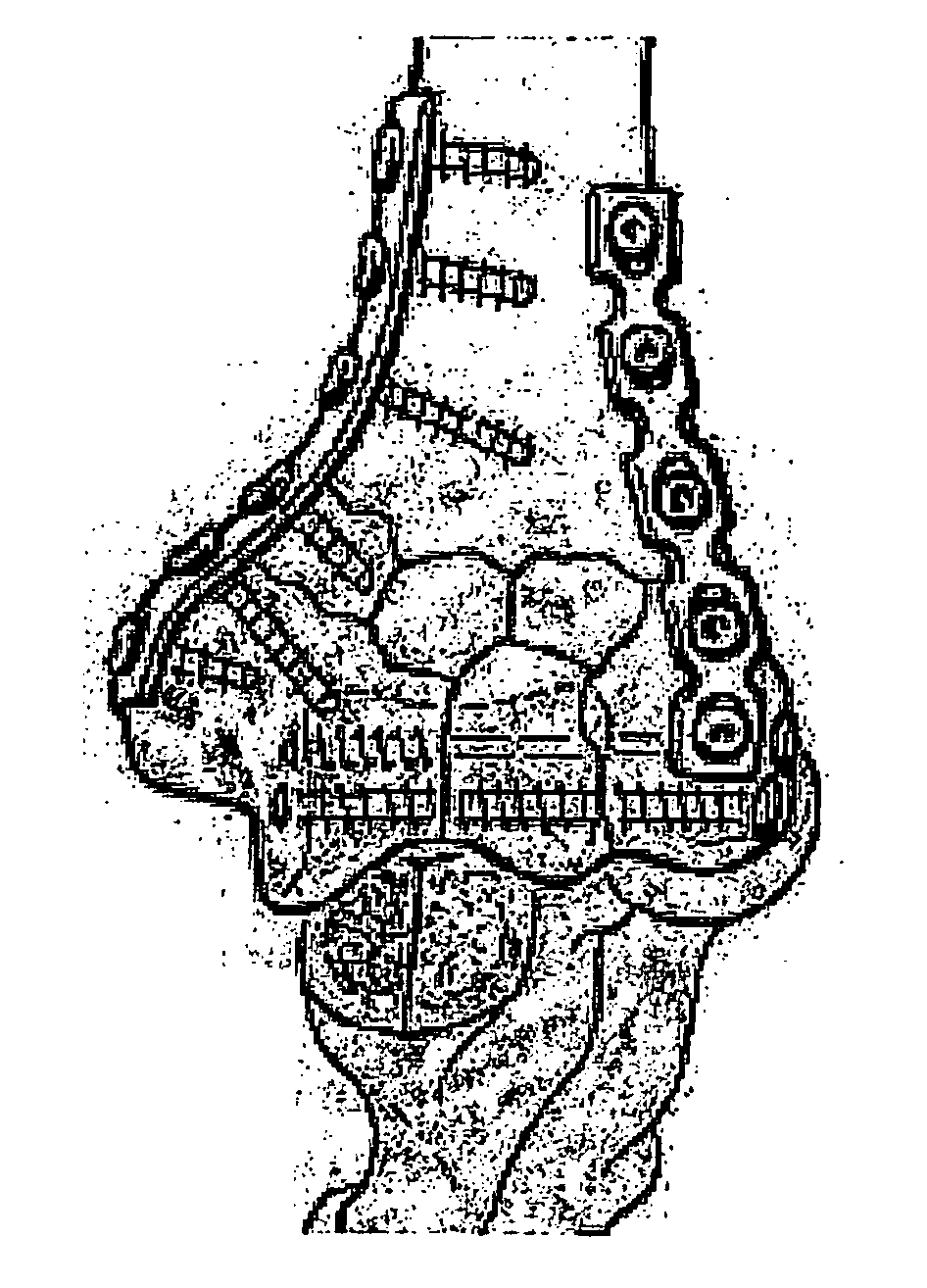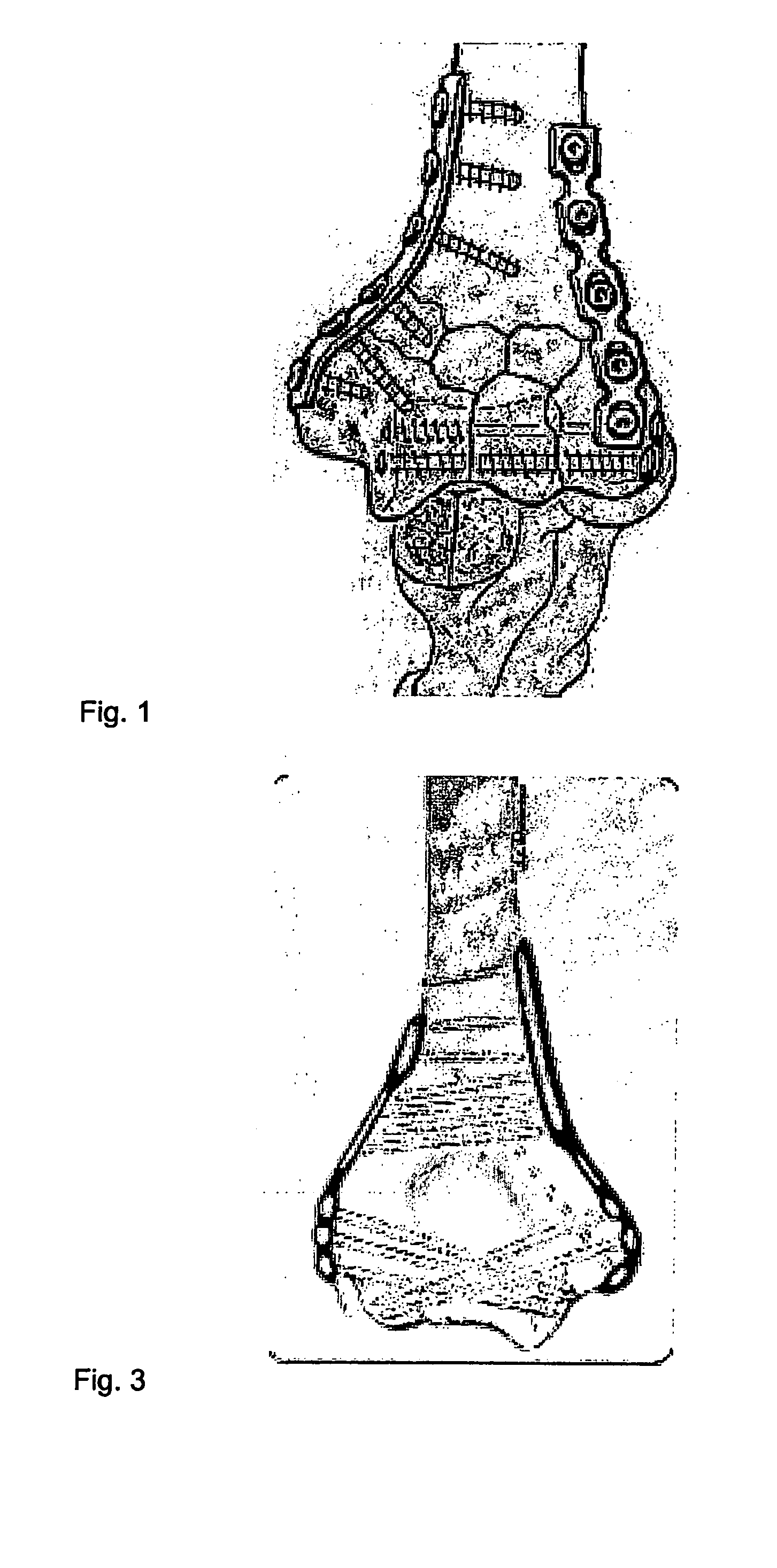Osteosynthesis plate set
a technology of osteosynthesis and plate, applied in the field of osteosynthesis set, can solve the problems of lack of bone support and fixing points for bone screws, loss of mechanical stability of plate osteosynthesis, and time-consuming plate adaptation, and achieve the effect of stable and more rotationally rigid splinting, and better fixing of bone fragments
- Summary
- Abstract
- Description
- Claims
- Application Information
AI Technical Summary
Benefits of technology
Problems solved by technology
Method used
Image
Examples
Embodiment Construction
[0052]FIGS. 1-5 show the solutions available today on the market. FIGS. 6, 7, 11 and 12 show osteosynthesis plate sets 2g, 2h, 2i according to the invention in the positioned state.
[0053]FIGS. 8-9 show two different osteosynthesis plates 2g, 2h of a set according to the invention, and FIG. 10 shows a variant 2i of the design according to FIG. 9 without a tab.
[0054]FIGS. 6 and 7 show various hole shapes 3a, 3b, 3c in the osteosynthesis plates 2h and 2i, and FIGS. 6-7 and 11-12 show the preferred position of the osteosynthesis plates 2g, 2h, 2i on the bone 1.
[0055] As is evident from the diagrams in FIG. 6 and 11, drilled holes 3a, 3b, 3c lie along axes which intersect approximately at right angles with comparable axes of the drilled holes 3a, 3b, 3c of the respective other osteosynthesis plate 2h, 2g. In addition, further holes 3b which, owing to the tab-like curvature of the flange 4 are not parallel to the axes of the other holes 3a, 3b, 3c of the same osteosynthesis plate 2h ar...
PUM
 Login to View More
Login to View More Abstract
Description
Claims
Application Information
 Login to View More
Login to View More - R&D
- Intellectual Property
- Life Sciences
- Materials
- Tech Scout
- Unparalleled Data Quality
- Higher Quality Content
- 60% Fewer Hallucinations
Browse by: Latest US Patents, China's latest patents, Technical Efficacy Thesaurus, Application Domain, Technology Topic, Popular Technical Reports.
© 2025 PatSnap. All rights reserved.Legal|Privacy policy|Modern Slavery Act Transparency Statement|Sitemap|About US| Contact US: help@patsnap.com



